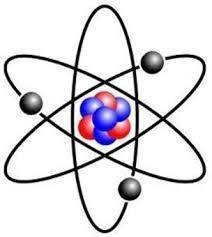 Close Topic Options
Close Topic OptionsWhy Are Atoms Always Moving?
Why Atoms Moving - Sciences, Education, Art, Writing, UFO - Posted: 25th Apr, 2016 - 1:35pm
Why Are Atoms Always Moving?
The Movement of Atoms?
Why are atoms always moving and is there a way to stop them from this constant movement?

Why Are Atoms Always Moving? (Hover)
Moving Atoms Why
I have a Ph.D. In Chemistry and have studied Quantum Mechanics for several years now. The best answer as to why atoms move is: because they have energy. I know that is very simple, but it is the basic truth. Now if you want to discuss why they have energy and the different forms that energy can take, it will be a big topic.
Now to address the second part of your question about stopping atomic motion. This actually relates to our temperature scale. At the theoretical temperature of zero Kelvin, all motion stops. However it has proved nearly impossible to actually reach this threshold. The lowest actually achievable motion of atoms has been recorded around a few billionths of a Kelvin. This is all in artificial settings of a laboratory, involving lasers and high vacuum around a single atom, but it has been demonstrated. As for removing that last little bit of energy, it is seen as impossible mostly because of a consequence of Einstein's thoery. E=mc2, which allows for conversion of mass (M) to energy (E), and thus so long as something has mass, it must also have energy. As soon as all energy is taken away, no mass exists either and you are talking about a vacuum, not actual atoms.
I can discuss this more if you are really interested, but this is a high level overview of the subject.
Moving Atoms Why
Energy comes from the inherent nature of the universe. You might have heard of entropy (The energy of disorganization), and this is the most basic source of energy. Also all the energy in the universe was 'created' at the beginning, but now energy can neither be created nor destroyed, so once one atom is slowed down and 'cooled' that energy must go to some other atom. There are many energy transfer processes, but effectively the answer is: no, energy never runs out.
There is a theory that since the universe is expanding, but energy is not being created, that there will eventually be so little per unit volume that it will effectively 'run out', but that won't be for many billions of trillions of years and is only a theory.
There is a comic of a humorous interpretation of Asimov's Last Question, related to exactly this type of thinking. [..]
Moving Atoms Why
So I guess energy is only worthwhile when there are enough atoms joined together to make it useful such as a block of wood on the fireplace or gas in your car. This would explain why stars eventually expand and then contract after exploding to release the remaining energy?
Why Are Atoms Always Moving?
The atom without properties
The microscopic world is governed by the rules of quantum mechanics, where the properties of a particle can be completely undetermined and yet strongly correlated with those of other particles. Physicists have observed these so-called Bell correlations for the first time between hundreds of atoms. Ref. Source 9o.
Why Atoms Moving
Well yes and no, hunter. There is always energy available in the atom (Hence the atomic bond, where you can split an atom and get a huge explosion), but there is such a thing as true vacuum where there are no atoms nearby to provide or carry energy.
This is not the reason stars expand and contract, that is actually related to fission (The combining of atoms). Stars are big balls of hydrogen that are colliding at colossal speeds to form a new atom (Namely helium), eventually this newly formed atom collides and you get every element in the periodic table by this iterative process. The center of stars eventually become full of iron (Because it is the last stable decay product of all these nuclear reactions). There are two competing processes in a star, one is all the energy being generated, causing the star to always expand, and the other is gravity (From all this mass of atoms at the center) causing it to contract. Eventually one or the other wins and the star either explodes as a red giant, to then contract as a white dwarf, or gravity wins and it explodes as a supernova and contracts as a neutron star (Black hole). Admittedly we are getting a little outside my expertise at this cosmic scale, but that is generally what is happening.
Why Atoms Moving Sciences Education Art Writing & UFO
I don't know how far we can ever go in the micro universe but if you could see inside an atom ther must even more movement. I'm talking about the neurons, protons, etc. Suppose they have their own little atoms inside that, etc. How far can you go to dissect the smallest of the smallest!
 TOPIC: Why Are Atoms Always Moving?
TOPIC: Why Are Atoms Always Moving? What makes atoms move?
What makes atoms move?